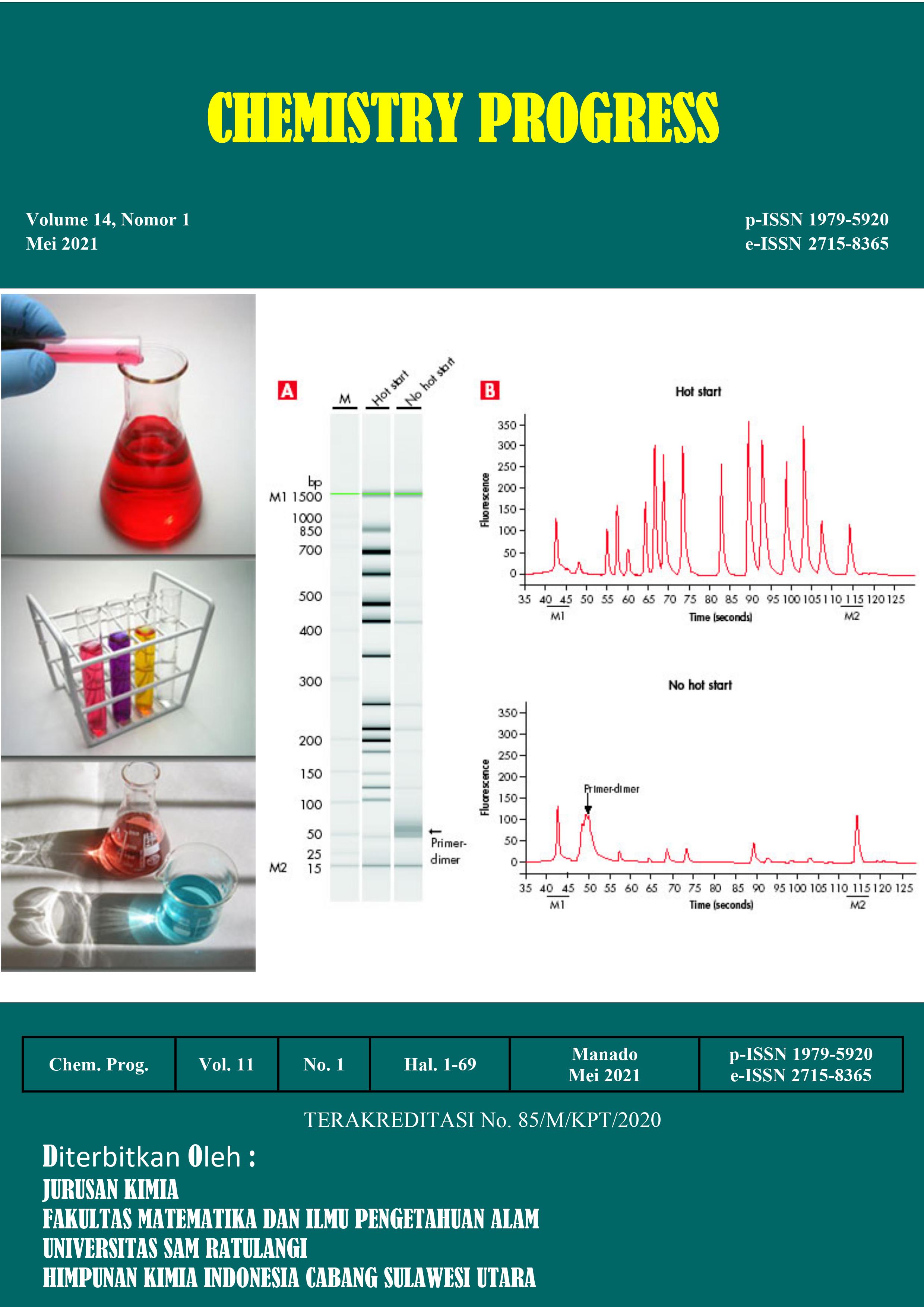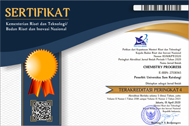KARAKTERISASI SERAT PANGAN DAN AKTIVITAS ANTIOKSIDAN DARI TEPUNG KULIT KAKAO (Theobroma cacao L.)
DOI:
https://doi.org/10.35799/cp.14.1.2021.34773Keywords:
karakterisasi, antioksidan, serat pangan, tepung kulit kakaoAbstract
ABSTRAK
Â
Tujuan penelitian ini yaitu untuk mengetahui karakteristik dan aktivitas antioksidan serat pangan dari tepung kulit kakao yang diekstraksi menggunakan gelombang ultrasonik dengan perbedaan pelarut. Penelitian ini terdiri dari 3 tahap yaitu mikronisasi, ekstraksi dan karakterisasi. Hasil karakterisasi secara fisik tepung kulit kakao tanpa perlakuan (KKTP), yang diekstraksi dengan aquades (KKA) dan etanol (KKE) dengan Fourier Transform Infra Red (FTIR) tidak mengalami perubahan mendasar pada komponen utama setelah proses penggilingan dan ekstraksi secara sonikasi. Hasil difraksi sinar-X menunjukkan derajat kristalinitas KKTP (55,58%) lebih besar daripada KKA (54,24%) dan KKE (53,48%). Hasil karakterisasi secara kimia menunjukkan kandungan air KKTP lebih tinggi dari KKA dan KKE, kandungan protein, karbohidrat dan lignin KKA lebih tinggi dari KKTP dan KKE. Sedangkan kandungan abu, lemak, serat pangan tak larut, serat pangan terlarut, total serat pangan, hemiselulosa dan selulosa KKE lebih tinggi dari KKTP dan KKA. Hasil pengujian aktivitas antioksidan menunjukkan ekstrak fenolik terikat KKTP (88,38%), KKA (90,61%) dan KKE (92,78%) lebih tinggi dibandingkan ekstrak fenolik bebas KKTP (86,85%), KKA (88,19%) dan KKE (90,04%). Adapun kapasitas penangkal nitrit menunjukkan bahwa ekstrak fenolik terikat KKTP (40,28%), KKA (55,90%) dan KKE (67,92%) lebih besar dibandingkan ekstrak fenolik bebas KKTP (34,84%), KKA (53,22%) dan KKE (64,63%).
Â
ABSTRACT
Â
The purpose of this study was to determine the characteristics and antioxidant activity of dietary fiber from cocoa husk flour extracted using ultrasonic waves with different solvents. This research consists of 3 stages, namely micronization, extraction and characterization. The results of the physical characterization of untreated cocoa husk flour (KKTP), which was extracted with distilled water (KKA) and ethanol (KKE) with Fourier Transform Infra Red (FTIR) did not experience any fundamental changes in the main components after milling and sonication extraction. The results of X-ray diffraction showed that the degree of crystallinity of KKTP (55.58%) was greater than that of KKA (54.24%) and KKE (53.48%). The results of chemical characterization showed that the air content of KKTP was higher than KKA and KKE, the protein, carbohydrate and lignin content of KKA was higher than KKTP and KKE. Meanwhile, the content of ash, fat, insoluble dietary fiber, soluble dietary fiber, total dietary fiber, hemicellulose and KKE cellulose were higher than KKTP and KKA. The antioxidant test results showed that KKTP (88.38%), KKA (90.61%) and KKE (92.78%) phenolic extracts were higher than KKTP-free phenolic extracts (86.85%), KKA (88.19) % ) and KKE (90.04%). The nitrite antidote capacity showed that the phenolic extract supported KKTP (40.28%), KKA (55.90%) and KKE (67.92%) greater than KKTP-free phenolic extract (34.84%), KKA (53, 22%) and KKE (64.63%).













